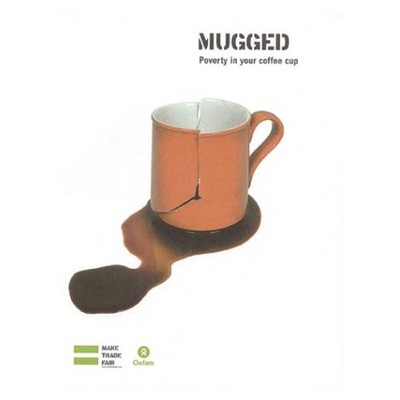
- We will send in 10–14 business days.
- Author: Charis Gresser
- Publisher: Oxfam
- ISBN-10: 0855985275
- ISBN-13: 9780855985271
- Format: 21.1 x 26 x 0.5 cm, minkšti viršeliai
- Language: English
- SAVE -10% with code: EXTRA
Reviews
Description
There is a crisis destroying the livelihoods of 25 million coffee producers around the world. The price of coffee has fallen by almost 50 per cent in the past three years to a 30-year low. Farmers sell at a heavy loss while branded coffee sells at a hefty profit. The coffee crisis has become a development disaster whose impacts will be felt for a long time. Families dependent on the money generated by coffee are pulling their children, especially girls, out of school. They can no longer afford basic medicines, and are cutting back on food. Beyond farming families, coffee traders are going out of business. National economies are suffering and some banks are collapsing. Government funds are being squeezed dry, putting pressure on health and education and forcing governments further into debt. The scale of the solution needs to be commensurate with the scale of the crisis. Oxfam is calling for a Coffee Rescue Plan to make the coffee market work for the poor as well as the rich. The plan needs to bring together the major players in coffee to overcome the current crisis and create a more stable market. This accessible report, with illustrations and many visual aids, outlines the extent of the crisis in the coffee market and the reasons behind it, and presents a strategy for action.
Intensive farming techniques reduce quality and degrade the land
No alternatives: declining commodities and the failure of rural development
Lack of alternatives to coffee as a cash crop
Depending on declining commodities
Too little value captured
Failure to deliver on rural development
Inadequate regulation
Farmers' and workers' organisation under attack
Scarce information
Too little training and support
Bad loans, no new credit
Weak rural infastructure
Declining aid and double standards: farmers betrayed by the donors
3. Niche markets - an escape route? Not for all
Fair Trade: a glimmer of hope
Specialty brands capturing high value
Running for the same exit?
No grounds for inertia
4.Getting out of crisis: a strategy for action
Restore the balance of supply and demand
Restore quality and raise productivity
Raise prices, revive livelihoods
Retain and build value-adding capacity
Establish real alternatives for rural development
Conclusion
Recommendations: A Coffee Rescue Plan
Notes
Background research
Oxfam's work with coffee producers
Oxfam International contact details.
EXTRA 10 % discount with code: EXTRA
The promotion ends in 22d.23:24:59
The discount code is valid when purchasing from 10 €. Discounts do not stack.
- Author: Charis Gresser
- Publisher: Oxfam
- ISBN-10: 0855985275
- ISBN-13: 9780855985271
- Format: 21.1 x 26 x 0.5 cm, minkšti viršeliai
- Language: English English
There is a crisis destroying the livelihoods of 25 million coffee producers around the world. The price of coffee has fallen by almost 50 per cent in the past three years to a 30-year low. Farmers sell at a heavy loss while branded coffee sells at a hefty profit. The coffee crisis has become a development disaster whose impacts will be felt for a long time. Families dependent on the money generated by coffee are pulling their children, especially girls, out of school. They can no longer afford basic medicines, and are cutting back on food. Beyond farming families, coffee traders are going out of business. National economies are suffering and some banks are collapsing. Government funds are being squeezed dry, putting pressure on health and education and forcing governments further into debt. The scale of the solution needs to be commensurate with the scale of the crisis. Oxfam is calling for a Coffee Rescue Plan to make the coffee market work for the poor as well as the rich. The plan needs to bring together the major players in coffee to overcome the current crisis and create a more stable market. This accessible report, with illustrations and many visual aids, outlines the extent of the crisis in the coffee market and the reasons behind it, and presents a strategy for action.
Intensive farming techniques reduce quality and degrade the land
No alternatives: declining commodities and the failure of rural development
Lack of alternatives to coffee as a cash crop
Depending on declining commodities
Too little value captured
Failure to deliver on rural development
Inadequate regulation
Farmers' and workers' organisation under attack
Scarce information
Too little training and support
Bad loans, no new credit
Weak rural infastructure
Declining aid and double standards: farmers betrayed by the donors
3. Niche markets - an escape route? Not for all
Fair Trade: a glimmer of hope
Specialty brands capturing high value
Running for the same exit?
No grounds for inertia
4.Getting out of crisis: a strategy for action
Restore the balance of supply and demand
Restore quality and raise productivity
Raise prices, revive livelihoods
Retain and build value-adding capacity
Establish real alternatives for rural development
Conclusion
Recommendations: A Coffee Rescue Plan
Notes
Background research
Oxfam's work with coffee producers
Oxfam International contact details.


Reviews